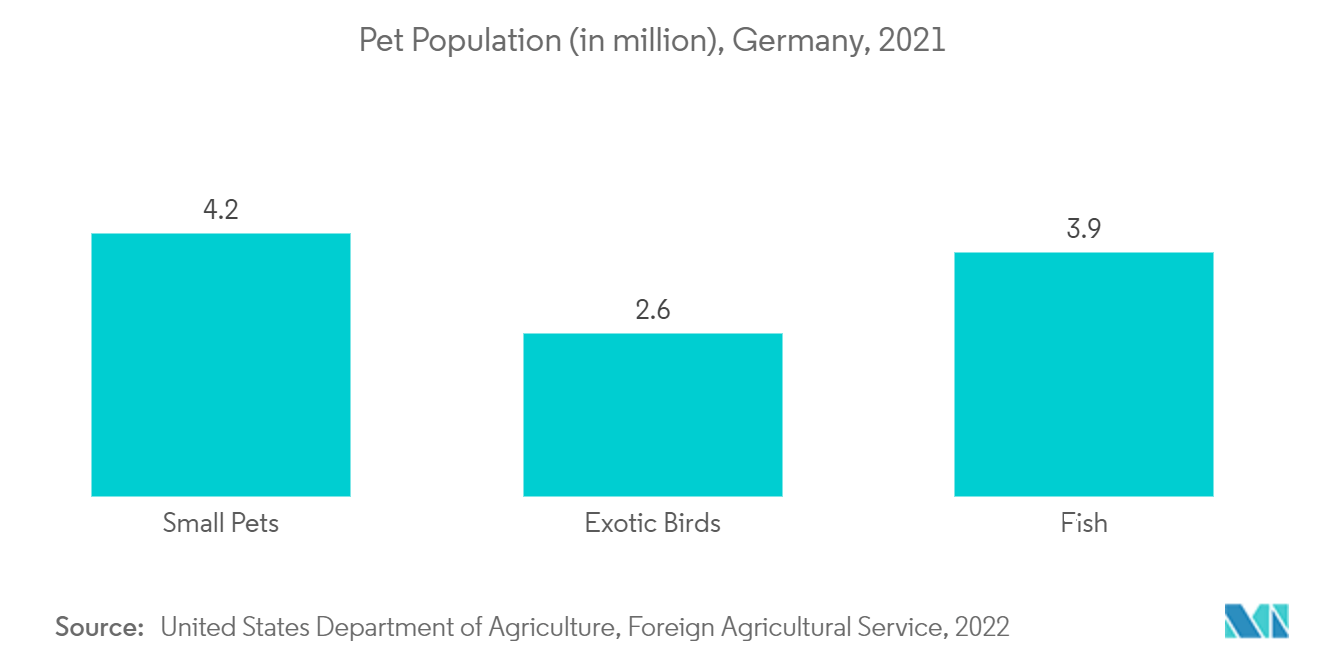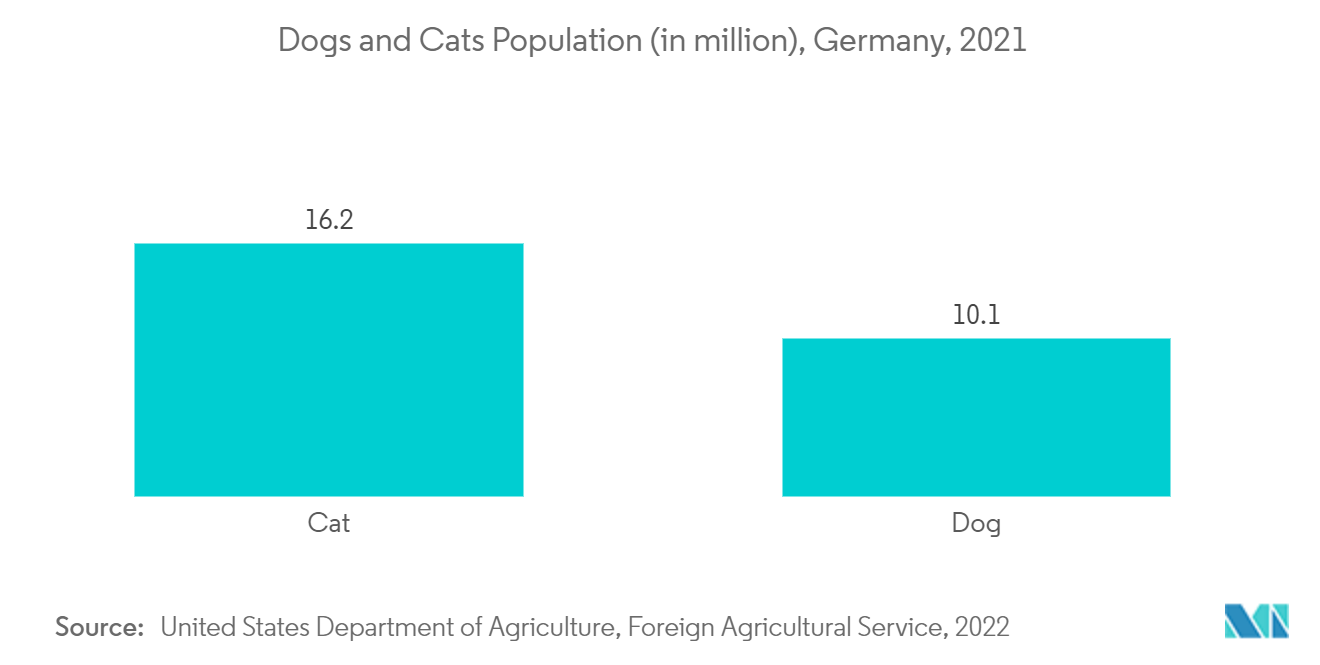Market Trends of Germany Veterinary Healthcare Industry
This section covers the major market trends shaping the Germany Veterinary Healthcare Market according to our research experts:
Vaccine Segment is Expected to Hold a Significant Market Share Over the Forecast Period
Vaccines comprise viruses, bacteria, and other disease-causing organisms that have been killed or altered so that they cannot cause any disease, boosting immunity. New advanced vaccines have been manufactured containing genetically engineered components derived from those disease agents.
Various market players are engaged in strategic initiatives such as product launches, approvals, and partnerships fueling the segment's growth. For instance, in March 2022, Boehringer Ingelheim launched the porcine parvovirus vaccine ReproCyc ParvoFLEX for healthy gilts and sowed six months and older. It offers practical and safe protection against reproductive failure brought on by porcine parvovirus. The innovation in the vaccine segment is estimated to propel the demand and its usage on a large scale to treat deadly diseases and ultimately add to the segment's growth.
Also, in April 2022, the PREVEXXION RN+HVT+IBD and PREVEXXION RN vaccinations for Marek's disease were launched by Boehringer Ingelheim in the EU nations, including the United Kingdom and Germany. As a result, these changes are projected to benefit the market, spurring segment expansion over the projection period.

Dogs and Cats are Expected to Hold a Significant Market Share Over The Forecast Period
Dogs and Cats are expected to hold a significant market share owing to the reasons such as rising adoption, rising pet healthcare expenses, and insurance facilities for pets.
The growing population and increasing adoption of dogs and cats by the German population is expected to increase the demand for their vaccines and the need for healthcare to prevent them from developing zoonotic diseases, which are anticipated to propel the segment growth during the forecast period. For instance, the European Pet Food Industry report reported 10,300,000 dogs and 16,700,000 cats in Germany in 2021. As per the same source, the estimated percentage of German households owing at least one cat was 21%, and one dog was 19% in 2021. This indicates that the adoption of cats was higher among the population than dogs. Pet adoption is estimated to propel healthcare expenses, boosting segment growth.
Furthermore, according to Der Deutsche Heimtiermarkt, 2022, the number of cats adopted was higher in Germany as compared to dogs, as 16.7 million cats live in 26% of German households compared to 10.3 million dogs in 21% of households. Also, from the same source, the number of mixed-breed dogs has increased from 42% to 44%. Germany is the European nation with the most significant number of cats and dogs as pets.
Thus, the increasing adoption of dogs and cats by the population in the country is expected to increase the demand for their therapeutics and diagnostics, which is anticipated to propel the segment growth over the forecast period.

